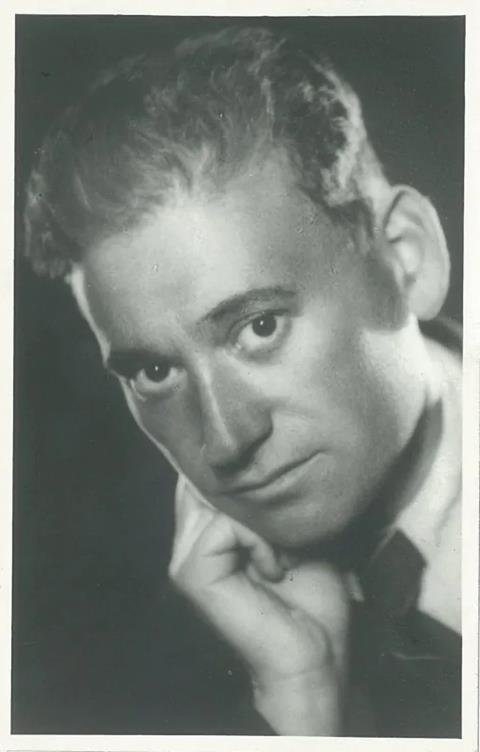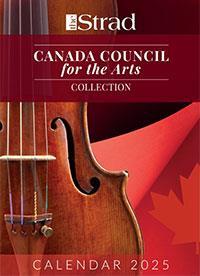US correspondent Thomas May previews the US premiere of Holocaust victim Sándor Kuti’s String Quartet no.2 by the Seattle-based Music of Remembrance

A string quartet written 90 years ago by the young Jewish Hungarian composer Sándor Kuti, who was murdered in the Holocaust, will be performed for the first time in the US as part of Music of Remembrance’s programme on Sunday, 27 Oct. Titled Peace Imagined, the concert opens Seattle-based MOR’s 2024/25 season, which next year will mark the 80th anniversary of the liberation of Auschwitz.
Born in 1908 in an impoverished section of Budapest, Kuti studied at the Budapest Academy of Music under Ernő Dohnányi. He was a classmate of Georg Solti, who much later declared: ’I am convinced that had he lived, he would have become one of Hungary’s greatest composers’.
But Kuti was only in his thirties when he perished in late 1944/early 1945 – the date is uncertain – while imprisoned by the Nazis in a forced-labour camp in Ukrainian territory. His String Quartet no.2, a work in three movements, dates from 1934. It is through the efforts of organisations like MOR and the cellist and musicologist Agnes Kory, who served as a consultant for the Kuti rediscovery, that audiences have a chance to experience his music.
Artistic director Mina Miller founded MOR in 1998. At the time, she recalls, ’music from this era was simply not available. The search for Kuti’s score reminded me of our first years at MOR, which gave me immense appreciation for art that has endured the unfathomable. This full-circle moment exemplifies our commitment to preserve voices that could have been silenced forever’.
Since then, MOR has expanded its mission beyond rescuing the music of composers silenced by the Holocaust to also give a platform to voices that have been persecuted or marginalised, including in our own era. To date, it has commissioned dozens of new works – song cycles, chamber pieces, film scores, operas and choreography – that confront these issues. Thus the Peace Imagined programme is named after a piece by the young Afghan composer and painter Milad Yousufi, whose story inspired a recent episode of Apple TV’s Little America. Yousufi will make his Seattle debut in the concert.
Though the score for Sándor Kuti’s String Quartet no.2 appeared in a single-print Hungarian publication in 1965, Miller’s efforts to gain access to an accurate performing edition required much detective work and led her to contact Agnes Kory. Herself born in 1944 in Budapest during the Holocaust, Kory wrote a condensed biography of Kuti and his associates in her late teens, while she was a student at the Béla Bartók Conservatory in 1963. Kory fled Communist Hungary the following year and settled in London. She served as principal cellist with the Royal Ballet (1972-74) and cellist with the English National Opera (1974-87), subsequently committing to a full academic focus, in particular on Holocaust issues; Kory is also an authority on the tenor violin.

Over the past summer, Kory collaborated with Kuti’s granddaughter Nikolett John to have the manuscript of the String Quartet no.2 printed and copied for the MOR performance, which will be given by Seattle Symphony musicians: Mikhail Shmidt and Natasha Bazhanov (violins), Artur Girsky (viola) and Eric Han (cello).
Kory points out that Kuti wrote down a short biography shortly before he perished, in which he listed his compositions, including chamber works for strings, an orchestral rondo, a piano suite and sonatina for piano, songs and choral works, and pieces for children.
’Kuti was a pianist, composer and conductor and had three diplomas from the Budapest Academy of Music,’ Kory said in a recent interview from her home in London. ’After he left the Academy, he was a piano accompanist and conducted choirs. But according to my best knowledge, he did not play a string instrument. So it is surprising that he wrote three string trios, two string quartets, a sonata for two violins, and a solo violin sonata’.
The solo sonata was Kuti’s last work, written in the concentration camp where he perished at such a young age. ’He wrote it down on an ordinary piece of paper on which he drew lines’, Kory explains. ’Through a sympathetic guard, he managed to get the manuscript out to his wife’ – who, in hiding in Budapest, was pregnant at the time. ’But I don’t understand why he wrote all this string music, since he did not play the violin’.
The String Quartet no.2 dates from 1934, when Kuti was 26. How does Kory characterise its style? ’I can hear a little bit of Bártok and a little bit of Kodály – which is hardly surprising, since they were such important figures at the Budapest Music Academy, where he studied. I also hear quite a bit of Jewish sentiment in his use of the augmented second. Even though he was secular, Kuti conducted a Jewish choir. Like so many of the Jewish musicians who were persecuted in Hungary, he found employment through OMIKE, a Jewish cultural organization which provided work opportunities’.
Kory says that the quartet is basically ’in the classical mode, for example in how it uses techniques like imitation’. In fact, she discovered a significant error in the printed music, where a rest was missing before one of the violin entries. Kory adds that the piece has Hungarian dance rhythms suggestive of Bartók. ’Overall, then, it’s a mixture of Hungarian and Jewish background, with the training of a classical musician. If the piece is performed well, I think it should get hold of the audience’s imagination’.
Read: Cello of Holocaust victim reunited with daughter after 80 years
Read: Joshua Bell and Steven Isserlis on their passion for Mendelssohn
Read: Freedom of expression: Anja Lechner on her debut solo cello album
The number one source for playing and teaching books, guides, CDs, calendars and back issues of the magazine.
In The Best of Technique you’ll discover the top playing tips of the world’s leading string players and teachers. It’s packed full of exercises for students, plus examples from the standard repertoire to show you how to integrate the technique into your playing.
The Strad’s Masterclass series brings together the finest string players with some of the greatest string works ever written. Always one of our most popular sections, Masterclass has been an invaluable aid to aspiring soloists, chamber musicians and string teachers since the 1990s.
The Canada Council of the Arts’ Musical Instrument Bank is 40 years old in 2025. This year’s calendar celebrates some its treasures, including four instruments by Antonio Stradivari and priceless works by Montagnana, Gagliano, Pressenda and David Tecchler.






































1 Readers' comment